Matador Network's Blog, page 706
February 5, 2021
You can rent Julia Child’s cottage in the South of France on Airbnb

We hope you love the spaces and stays we recommend! Just so you know, Matador may collect a small commission from the links on this page if you decide to book a stay, and listed prices are accurate as of the time of publication.
MAYBE YOU LEARNED to bake bread during the pandemic, but you’re still lightyears away from becoming Julia Child herself. Well, now you can get a little closer. The home of the famed cooking teacher, author, and TV personality is now available for rent in the South of France. The “La Peetch” cottage the Childs built in Cote d’Azur, France, was recently sold, and its new owners (a Colorado-based couple) have turned it into an Airbnb culinary retreat.
La Peetch has three bedrooms, a sitting room, and gardens with a terrace and swimming pool. The most important part of the cottage, of course, is the kitchen, with wooden countertops, a pegboard pot, and utensil storage painted with the outlines of the original cooking implements used by Julia.
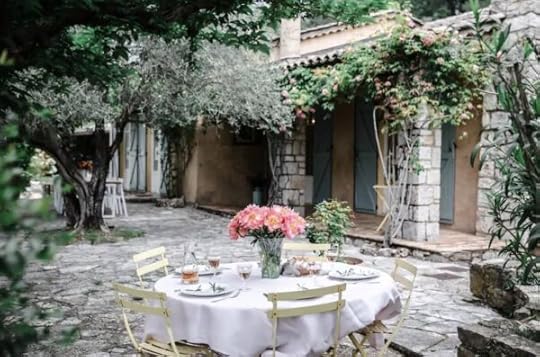
Photo: Airbnb
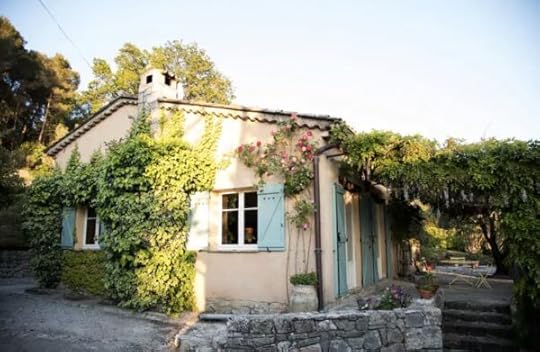
Photo: Airbnb
The cottage is currently on Airbnb for $720 per night, but in the off-season (September through October) the home is used as a cooking school. According to the property description, “Cooking classes start at $1500 a day, which includes a market tour, French Chef Knife of choice (for up to 3 participants), ingredients, wine pairings, and cooking instruction for a multi-course, French-inspired meal. (This is a biiiiig day! Nearly 12 hours.) Extra days of cooking can be added as well.”
The hosts note that the home’s WiFi is particularly weak, but you’ll be far too busy cooking to notice. 
The post You can rent Julia Child’s cottage in the South of France on Airbnb appeared first on Matador Network.

What it’s like to travel to Canada during a cross-border closure

BACK IN MARCH 2020, the world’s longest non-militarized border — the one between the United States and Canada — closed to all but citizens, residents, and those deemed “essential workers” (mainly commerce and health professionals). Initially, the border closed for 30 days. Then another 30 days. The pandemic continued to rage.
This has continued every month since, with the most recent announcement extending the closure until at least February 21st, 2021. Prime Minister Justin Trudeau has indicated it will remain shut until Covid-19 cases are under control in the US and has recently intensified testing and quarantine requirements for inbound travelers.
This ongoing closure has created much hardship for numerous families, including my own. About two years ago, a year into our relationship, my boyfriend moved from Montréal to Vancouver to be closer to me in Seattle. Up until last March, one of us crossed the border almost every weekend with little more required than our passports and answers to standard questions from border agents.
When the border closed, I had a sneaking suspicion that it would be for longer than 30 days — but I never dreamed it would drag on all the way into 2021.
Family member exemptionsIn June 2020, Canada announced border closure exemptions for family members. Initially, a wave of relief washed over me, but after a closer read of the regulations, I realized our relationship did not qualify. Summer stretched on with the end of each month bringing more disappointment as border restrictions were prolonged. I tried to remain optimistic, kept busy with work, quarantine activities, and exercise. Looking back, I now realize how much of a coping mechanism that intense productivity mindset was for all of us — and for me, separated from my partner with no end in sight.
My boyfriend, also suffering from the circumstances, with no real ties or reason to stay in British Columbia now that we couldn’t see each other, decided to return home to Montréal. So, over Skype, with as much understanding as I could muster, I sent him off back east and tried to hold onto the shrinking sense of hope for a reunion before the end of the year.
Then in October 2020, long fought-for exemptions were announced for those classified as “extended family,” including couples in exclusive dating relationships like us. I was overcome with more joy than I’d felt in months. Finally there was a clear way for us to reunite.
However, crossing the border would be very different to what we’d become accustomed to. As an American who grew up in a border state during the era of passport-free travel, it was quite bizarre to suddenly have to request permission to enter a country that had always felt closer (both geographically and culturally) than many US states.
I couldn’t just rock up to the border with a passport and expect to be let in. Just like any extended family, we needed to follow the procedure detailed on Canada’s government travel exemptions webpage and request permission for me, the American, to enter the country.
It was overwhelming — even for someone such as myself, whose day job until recently involved a lot of immigration paperwork for international students. I nearly collapsed from frustration when the first few emails to the Canadian government bounced back due to oversized attachments. Every single step felt like a little victory. Even just getting an email to send.
Each day without a response seemed neverending, but I tried to stay positive and remember there was no reason to worry: I’d followed the required steps scrupulously and had no reason to believe there’d be an issue. But it was difficult to keep my anxiety in check while reading reports of families waiting a full calendar month or more for approval. I worried about putting all my eggs in one basket, having put in notice at work in hopes of a reunion in time for the holidays followed by an extended visit.
The stress I put myself through while doomscrolling others’ stories ended up being completely worthless as we received approval less than a week later. I cried in relief realizing my plan to fly on Christmas Day could go ahead. My heart goes out to families who had to suffer through similar uncertainty and pain for much longer.
Entering CanadaIn preparation for my flight, I put together a “customs folder,” which included everything listed on the government exemption webpage, as well as any other documents I thought could support my story. This was just one of the many ways travel to Canada had changed over the course of the pandemic. The night before my flight an error message popped up on the check-in page, adding to my long list of concerns about traveling in the midst of a pandemic spike.
Luckily, it was a routine system flag for “non-Canadian passport holder.” At the very empty check-in counter at Sea-Tac, they asked to verify my “Canadian documents,” and I calmly presented my folder, with my approval letter from the Canadian government on top.
“Wow, you really prepared everything,” the desk agent nodded, impressed.
My organizational skills paid off. Travel to Canada remains extremely restricted, and I was asked for documentation at multiple points throughout the journey. The worst part was waiting on the first leg of my journey to Vancouver, half-convinced they’d turn me away at customs. I don’t think I’ve ever been worried about not being allowed in any country before, let alone Canada — a testament to the immense passport privilege us American passport holders used to have.
Upon arrival at Vancouver International, the surreal reality began to set in, as the mostly empty international terminal greeted us. My nerves kicked into overdrive at passport control, where my US passport was an immediate flag for the border officer.
I presented my folder which to my surprise she only briefly glanced at before sending me to baggage claim and customs, where they also only spent a few minutes examining my carefully curated documents. As I walked through the doors into arrivals, I couldn’t help but think, “is that it?” Surely any moment a border agent was going to pull me into a room for a full interrogation, before sending me back to Seattle.
Thankfully, that never happened.
After months of agonizing waits and panic-scouring the internet for how to best prepare for crossing the border, I caught my domestic connection to Montréal. I briefly wondered if I’d even recognize my boyfriend after months of only seeing each other through Skype.
Just like entering Canada, I needn’t have worried nearly as much as I did. As soon as I exited the airport, I was pulled into a hug in the freezing Montréal night.
Quarantine and beyondI landed in Canada before the new quarantine requirements were put in place, so after gathering my bags, my boyfriend and I went straight home, where we stayed for 14 days.
To say it was a learning curve is an understatement. We’d never lived together and hadn’t seen each other for most of 2020. While we were beyond grateful to finally be together, two weeks in a one-bedroom is enough to drive the most in-love couple to get under each other’s skin. Luckily, most spats were overshadowed by our joy in reunification.
Since completing quarantine we’ve still been mostly stuck together 24/7 — in an often groundhog day pattern — thanks to Québec’s strict ongoing lockdown, with all but essential services closed and an 8pm curfew for the past few weeks. That’s completely fine with me. I didn’t come for sightseeing or a ski trip; I want this pandemic finished just like everyone else. So I’m happy to stay in every night with hot chocolate, Netflix, and my partner, something that seemed so impossible just a few weeks ago.
Despite our joy in being together again, we’re still very much unsure of the future. A lot of my friends and family viewed my decision to quit my job to stay in Canada for an indefinite amount of time as quite the leap of faith. I suppose that’s true, but anyone that’s spent time apart from family during this pandemic knows that there comes a point you’d do pretty much anything to be together again.
For now, I’m enjoying my first Québec winter, attempting to freelance full-time and making tentative plans to explore more of the province safely, as lockdown hopefully eases. This entire pandemic has tested our relationship, but in the end we’ve come out stronger — and while we don’t have a clear vision for the future, we absolutely have more faith in our relationship than ever before.
I often wonder if the exemption process I went through is indicative of what’s to come post-pandemic. The last major event that prompted a border closure between Canada and the US — although just for a couple of days — 9/11 brought to an end the era of document-free travel between the two countries and amped up border security and scrutiny. Only time will tell what the new rules will be. But for now, I’m going to enjoy quality time with my partner, something I’ll never take for granted again. 
The post What it’s like to travel to Canada during a cross-border closure appeared first on Matador Network.

How to go skiing during COVID-19

In late December, Jennifer Ozanne was skiing at Utah’s Park City resort with her son and husband. She recalls sitting on the chairlift and having a realization, “I said to John it was the first time I felt normal.”
In a world turned upside down by COVID-19, Ozanne says her family’s winter ski trip felt unexpectedly ordinary. She acknowledges that many of the details were unusual. Rather than flying from their home in San Francisco, as they’d done the previous year, they drove the nearly 12 hours to Park City. They’d reserved lift tickets in advance. And, of course, they couldn’t crowd in the lift lines.
Yet wearing face coverings while skiing is pretty common, and in most resorts you can pull the mask down when you’re actually skiing or riding. So when Ozanne looked at the scene on the mountain, the sensation of normalcy hit her.
“Because we’d been there the year before, the experience of skiing and being on the mountain felt the same,” she says. “It just kind of struck us. I mean if we examined it, there were differences. It was more of an emotional feeling; relief that some things can feel normal in the midst of all the craziness.”
“When you’re skiing and you look around, it looks the same,” Ozanne explains. She contrasts that to life in her city. “Looking around San Francisco, there’s not the normal number of people, the people you see are in masks, everything is boarded up.”
Even relative to the outdoor settings that she and her family, like so many of us, have sought out during the pandemic, Ozanne says skiing felt more normal. “Probably people were wearing masks on days when it wasn’t so cold,” she says of skiing in Park City. But she says that is far different than hiking near their home and constantly pulling their masks up every time they pass someone. It’s a strange and unpleasant way to greet other people who are sharing a trail with you.
Moreover, with bars and restaurants shuttered in cities and towns, skiing has also felt like one of the few ways they can safely socialize in a way that feels familiar. And because resorts clearly mandate masks and distancing in common areas and lift lines, you don’t have to worry about that awkward feeling when you and those around you may have different takes on what’s necessary to stay safe.
“It was a contrast in normalcy at a time of very not normal. It made me feel like not everything will be strange forever, which is good,” Ozanne says.
Of course, from driving 12 hours instead of flying 90 minutes to eating every lunch outdoors, many things were different. For some, even accessing this opportunity could be challenging. The pandemic has left many people struggling financially, and skiing is expensive.
In other cases, there may be restrictions on traveling to mountain resorts. Vermont, for example, wants out-of-staters to quarantine when they arrive. Meanwhile, California is urging residents to stay within 120 miles of home. (Conveniently, Sacramento, the state capital where that arbitrary number was decided, is a mere 110 miles from top resorts like Squaw Alpine.)
But if you can get out there and enjoy a respite from the dystopian breakdown of life as we once knew it, please do. We all need reminders that there will be an end to the restrictions and social distance. The mountain air and exercise is not just good for your physical health. A glimpse of life beyond the pandemic will also be good for your mental well-being. Here are some tips for going skiing in these very unusual times.
Make advance reservationsBigger resorts will require reservations and limit the number of daily tickets sold. In some places, even season pass holders will need to reserve for the days they intend to ski. The good news is that a quick check found that even top resorts like Vail, Park City, and Stowe still had tickets available for Presidents’ Day weekend — a weekend that is normally crowded but this year, due to those lift ticket caps, won’t be.
The California resorts all have availability for Presidents’ Day weekend, but unless you’ve been spending the pandemic in Lake Tahoe — or live in Sacramento — you may be discouraged from traveling there. Likewise, if you’re on the East Coast and don’t have a week to quarantine in Vermont, you could check out New Hampshire resorts like Bretton Woods, which at the moment is not requiring ski reservations at all.
However, if you are near to a resort and do want to make a last-minute ski plan, many mountains open additional availability for reservations the day beforehand. That’s because even season pass holders have to make reservations to ski at many bigger resorts and they get penalized for no-shows — encouraging them to cancel so you can come ski.
Also, places like Winter Park in Colorado don’t require reservations to ski after 2:00 PM. That’s late in the day but it’s better than no skiing at all. Or look for smaller ski areas that, like Bretton Woods, don’t require advance reservations.
Prepare to eat outsideThroughout North America, resorts are open for grab n’ go dining — usually cashless, to further minimize contact. Depending on the state, some indoor dining may be available — often partitioned and at reduced capacity. If you can’t or don’t want to eat indoors, you can still grab a beer and take-away food and enjoy it in the sunshine. Even with the sun out, though, you’re in the mountains and spending the entire day outdoors — so dress warmly.
In places where it gets really cold, there are some lunch workarounds. If you want to ski in Stowe, say, Vermont’s quarantine obligation may explain why they feel comfortable keeping some indoor dining open. If you don’t manage to get a table inside or you just don’t feel comfortable taking off your mask indoors, you can always get your food to go and eat it at a chair like Stowe’s Four-Runner, which has a bubble you can bring down over you to protect against frigid temperatures or even snow. Likewise, gondolas are another protected spot to eat your lunch. With windows left open, gondolas get ventilated on their way down, so you can feel pretty comfortable about lowering your mask to eat your take-away lunch.
Stuff your pocketsNo matter what, you should have some extra snacks in your pocket, in case the eating situation feels uncomfortable or it’s too cold to bother sitting down to lunch. Also, be sure to toss in extra masks in your pocket, since once a mask gets wet it’s less effective.
Some resorts have even advised being sure you bring an extra layer and possibly water, as multiple hours outside can be dehydrating. This might even be a good year to ski with a small backpack.
Make a ski date with friendsIf friends aren’t in your pod, there’s a good chance you haven’t seen them indoors in months. You’ve done the hikes with masks on, chatted outside in your backyard until you are all shivering, or maybe only connected via Zoom.
If you can, try and meet them on the mountain. Riding up the chairlift, properly masked, will let you guys catch up in person, in real-time, not in a rush. This year you actually can’t ride chairlifts with people you don’t know — which is a bummer for those who like to share local know-how with newcomers, or who like to be the ones asking about it. But you are allowed to ride with people you know, and it’s probably been a while.
Being social with friends in a safe and actually acceptable setting has been a major upside of skiing for some of the folks Matador spoke to. At the end of the day, though, après may be out of the question. It depends where you are.
While Ozanne and her family didn’t hang out with other people while in Park City, they did appreciate all the other, wonderfully unexceptional parts of their stay. Their New Year’s Eve was spent, as were many peoples’, in front of a screen.
“We had a new year’s party on Zoom with our friends… which was totally fun but totally weird,” says Ozanne. “So surrounding the trip were all these strange things. It was like, ‘Oh we can make it through, and this time next year it will be really normal.’”
Let’s certainly hope so. 
The post Skiing is the most normal you’ll feel during COVID, here’s how to go appeared first on Matador Network.

Valles Caldera National Preserve
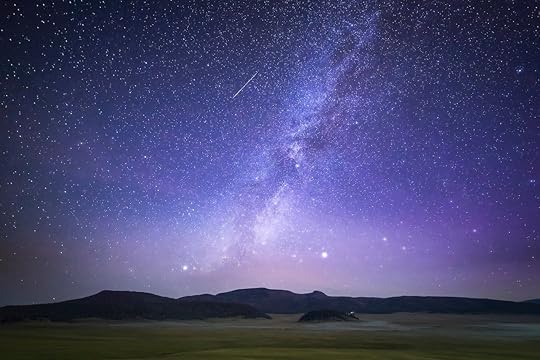
The United States has a brand new International Dark Sky Park located in north-central New Mexico. This week, the National Park Service and International Dark Sky Association announced that Valles Caldera National Preserve has been officially certified as an International Dark Sky Park. And they don’t hand out that designation to just anyone. To qualify, the park must have exceptionally high-quality night skies, and additional opportunities for enhancing visitor experiences through astronomy-based programming.
The park’s superintendent Jorge Silva-Banuelos said, “The night sky has inspired countless humans to dream, invent, and explore. With this certification, we are committed to preserving our dark night skies and sharing all that we can learn from them with our surrounding communities and visitors to Valles Caldera.”
The International Dark Sky Places Program started in 2001 with the aim of encouraging communities, parks, and protected areas to protect dark sky sites and improve education initiatives surrounding astronomy. The certification itself carries no legal authority, but it does put the focus on destinations that have made a commitment to public education and sustainable, efficient lighting.
There are currently over 100 dark sky certified destinations around the world, with Valles Caldera being the 20th national park site to receive the designation. 
The post New Mexico’s Valles Caldera National Preserve awarded Dark Sky certification appeared first on Matador Network.

Most beautiful trees and forests
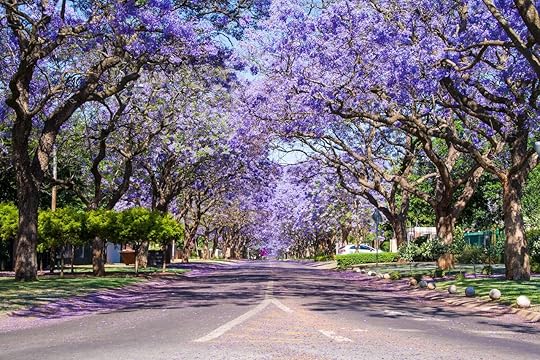
No one appreciated the beauty of trees, and immortalized them in literature, more than J.R.R. Tolkien. “I am at home among the trees,” said Legolas the elf in The Fellowship of the Ring, but it might as well have been Tolkien himself speaking. Under a black pine in the Oxford Botanic Gardens, the author sat and penned part of his famous trilogy, inspired by the trees and plants surrounding him. Tolkien viewed trees as living, breathing creatures with humanlike characteristics, and it’s easy to see why. From Japan’s bamboo forests to the ponderosa pines of Utah, the world’s trees are as diverse and beautiful as its people. Here are the most unique trees and forests around the world that will give you a Tolkien-esque love for trees.
1. Avenue of the Baobabs, Madagascar
Photo: Michail_Vorobyev/Shutterstock
Madagascar is known for its otherworldly-looking giant baobabs, which you can easily find lining the road between Morondava and Belon’i Tsiribihina. The “Avenue of Baobabs,” as it is known, is considered the most accessible place to see baobabs in Africa, and the most beautiful road in Madagascar. Baobabs can reach heights of nearly 100 feet, and live to more than a thousand years.
2. Wisteria tunnels, Japan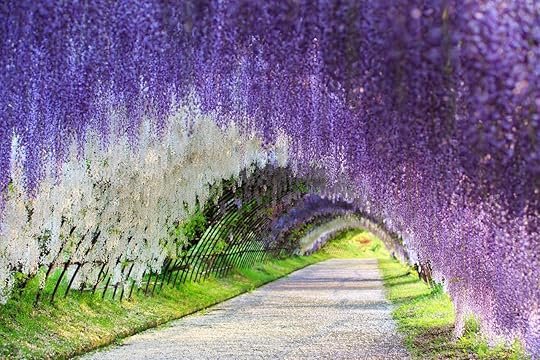
Photo: dk tazunoki/Shutterstock
Wisteria is a type of flowering vine that can be trained to take beautiful shapes. Every year, during the Wisteria Festival (Fuji Matsuri) in late April or early May, the 330-foot-long wisteria tunnels of Kawachi Fuji Gardens in Kitakyushu (on the island of Kyushu), and the enormous wisteria “tree” of Ashikaga Flower Park in Tochigi (on the island of Honshu), bloom to give us the most beautiful and colorful natural spectacle.
3. Rainbow eucalyptus, Papua New Guinea, Indonesia, and the Philippines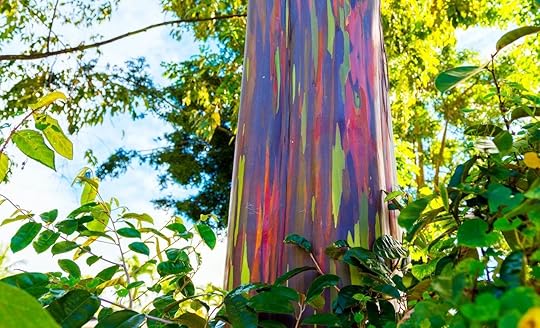
Photo: gg-foto/Shutterstock
The rainbow eucalyptus is native to the rainforests of the Philippines, Indonesia, and Papua New Guinea. Their bright coloration appears on the tree’s bark which peels off to reveal striking shades of green, purple, orange, and pink that are reminiscent of “your average four-pack of assorted highlighters,” Australian Geographic explained. Some have been planted in the US, including Balboa Park in San Diego, California, as well as in specific spots Kauai, Maui, and Oahu, in Hawaii.
4. Dragon’s blood trees, Socotra Island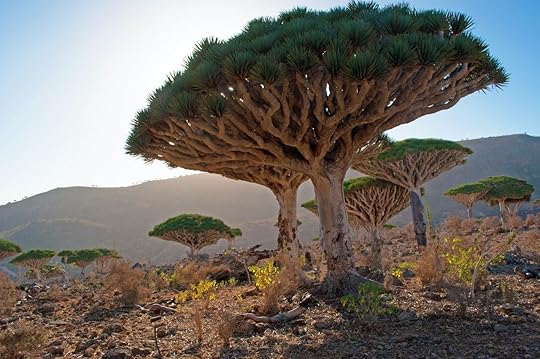
Photo: Naeblys/Shutterstock
Found on the Yemeni archipelago of Socotra in the Indian Ocean, dragon’s blood trees get their name from the red sap they produce. Given the island’s separation from the mainland about 20 million years ago, unique flora has been allowed to grow there undisturbed. According to National Geographic, 37 percent of the island’s 825 plant species are found nowhere else in the world.
5. Bamboo forests, Japan
Photo: Guitar photographer/Shutterstock
Like wisteria, bamboo is another plant that technically isn’t a tree — it’s grass — but when you’re walking through a dense “forest” of them, you can hardly tell the difference. Sagano Bamboo Forest near Kyoto, Japan, is the most famous of them, but you can also find them in places like Maui in Hawaii.
6. Angel Oak, South Carolina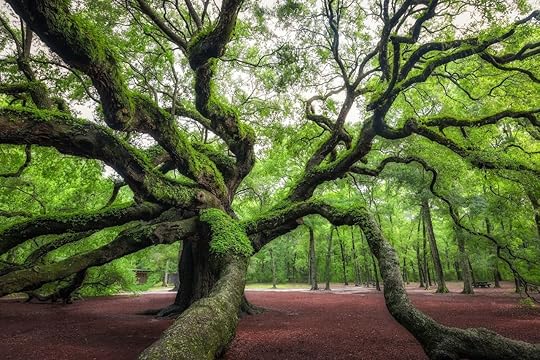
Photo: Mike Ver Sprill/Shutterstock
The famous angel oak is estimated to be between 300 and 400 years old. It’s growing just outside of Charleston, South Carolina, in the Angel Oak Park on Johns Island. Angel oak is considered one of the oldest living oak trees east of the Mississippi River. Forty-thousand visitors come to the park each year to see this magnificent 65-foot-tall tree.
7. Giant sequoias, California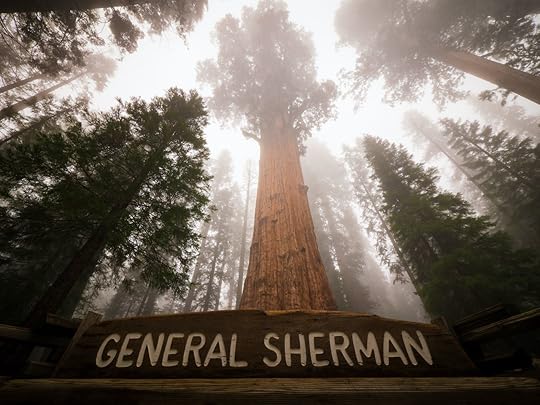
Photo: zdenekkounovsky/Shutterstock
Sequoia & Kings Canyon National Parks in California are home to the largest trees in the world, by volume. “General Sherman” is the largest tree on Earth by trunk volume, and draws hundreds of thousands of visitors a year to the park’s Giant Forest that is home to 8,000 sequoias. Sequoias can reach the age of 3,400 years old.
8. Dark Hedges, Northern Ireland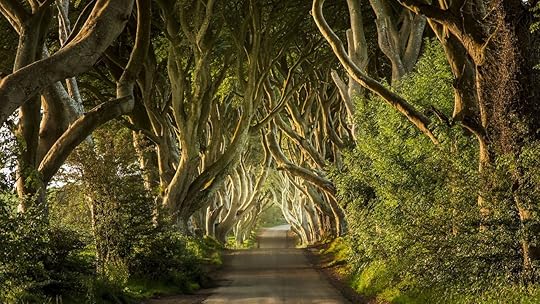
Photo: Michael Rocktaeschel/Shutterstock
This tunnel of beech trees in County Antrim, Northern Ireland, was planted back in the 18th century to impress those approaching the Georgian mansion, Gracehill House. Today, the Dark Hedges are well-known for being featured in HBO’s Game of Thrones, where they stand in as the Kingsroad, a road with Castle Black in the North at one end and King’s Landing in the South at the other.
9. Dead Vlei trees, Namibia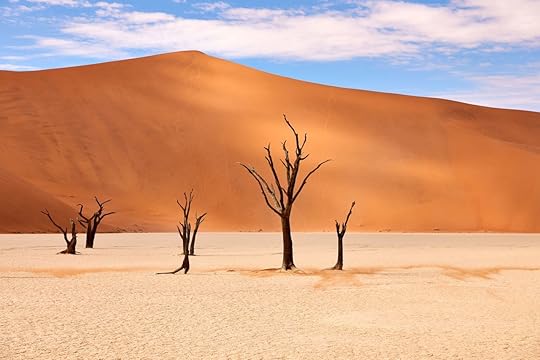
Photo: ArCaLu/Shutterstock
Sossusvlei in the Namib Desert is home to the Dead Vlei trees, which somehow manage to be both dismal and beautiful. The clay landscape was once in the floodplain of the Tsauchab River, but when the climate dried up some 900 years ago, sand dunes got in the way of the river flow and the trees all died. It’s too dry for trees to decompose, so they have been burnt black by the sun, and now form a forest of scorched trees, some over 1,000 years old.
10. Cherry blossoms, Japan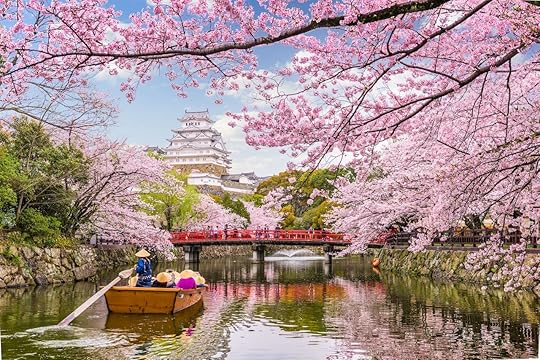
Photo: Sean Pavone/Shutterstock
From the German city of Bonn, to the grounds of the Imperial Palace in Tokyo, to DC’s Tidal Basin, cherry blossoms mark the arrival of spring. The blooming of the cherry blossoms is nothing short of a phenomenon in Japan, with blossom-themed festivals held in many parks around the country. Similarly, in Washington, DC people come from all over for the National Cherry Blossom Festival each spring.
11. Redwoods, California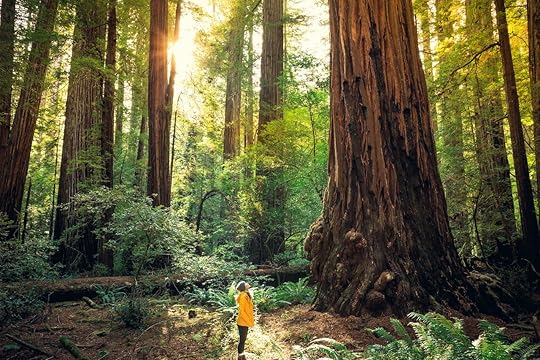
Photo: Stephen Moehle/Shutterstock
The tallest trees in the world, California’s coast redwoods, grow on a narrow sliver of land on the California coast, from south of the Bay Area up to the border with Oregon. There are many parks in California where visitors can see redwoods for themselves, including Redwood National Park, Muir Woods National Monument, and Calaveras Big Trees State Park. California’s coast redwoods can reach a height of 367 feet and a base width of 22 feet.
12. Ta Prohm, Cambodia
Photo: DeltaOFF/Shutterstock
Ta Prohm is one of the many beautiful temples in Siem Reap, Cambodia. Its popularity comes from the ceiba and fig trees that are slowly reclaiming the centuries-old stonework, their roots encroaching on the ruins, in a scene that shows the power of nature. You can wander through the temple’s corridors and explore the more natural maze created by the expanding roots.
13. Great Basin Bristlecone Pines, California, Utah, Nevada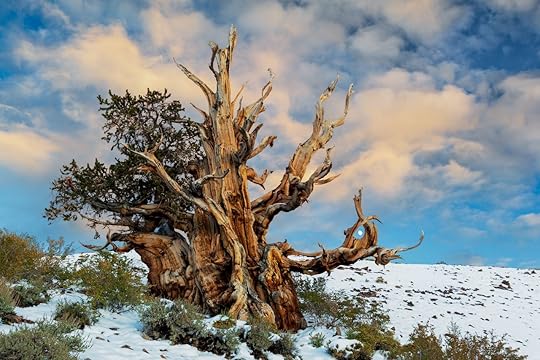
Photo: Greg Mitchell Photography/Shutterstock
Found only in California, Utah, and Nevada, the Great Basin bristlecone pine is the oldest non-clonal species on the planet. Very resistant to harsh climate and growing conditions, it grows so incredibly slowly that it’s able to stave off insects, fungi, rot, and erosion, allowing for a very long lifespan — some live over 5,000 years. The best places to see some is in Great Basin National Park, where there are three groves.
14. Blue jacaranda, South America
Photo: Vanessa Bentley/Shutterstock
The blue jacaranda, a fast-growing ornamental tree native of South America, is known for stunning its bell-shaped violet flowers. The blue jacaranda was introduced in many other countries over time, including, Australia, Hawaii, Kenya, Tanzania, South Africa, and Zambia. While beautiful, the blue jacaranda is considered an invasive species outside a few places in South America.
15. Ponderosa pines, Utah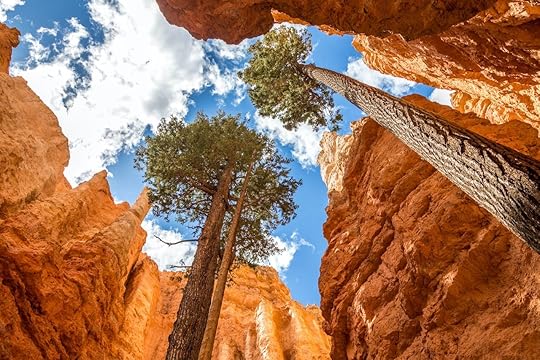
Photo: mariakray/Shutterstock
The Ponderosa pine is one of the American Southwest’s tallest trees, growing to heights up to 200 feet. The Ponderosa pine can be seen throughout western North America, but are most famous for appearing in Ponderosa Canyon in Utah’s Bryce Canyon National Park. The canyon is named for the unique trees, which can be found on the canyon floor. If you’re not sure you’ve run into a Ponderosa tree, try smelling its bark. According to the National Park Service, “Ponderosa Pine bark smells like vanilla or butterscotch.”
16. Banyan trees, India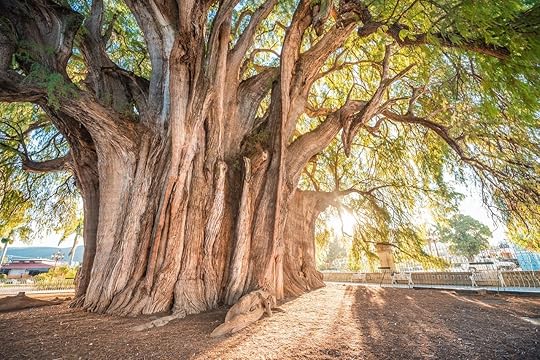
Photo: Rubi Rodriguez Martinez/Shutterstock
Banyan trees are short and stout trees native to India. Their particularity is their aerial roots that develop from their branches and drop to the ground to grow new trees. This growing technique is the reason why Banyan trees have such wide trunks — it’s actually several trunks that grow closely together. One of the best-known banyan trees is the Arbol del Tule, a tree estimated to be between 1,433 and 1,600 years old in the Mexican state of Oaxaca, whose trunk has the widest-known circumference in the world at 119 feet (according to the Guinness World Records in 2005).
17. Axel Erlandson’s art trees, California
Photo: SunCity/Shutterstock
The strangest trees you’ll ever see aren’t ones you’d find in the wild. They were created by the Swedish-American farmer Axel Erlandson, who engaged in the hobby of “tree shaping” and even opened an attraction called “The Tree Circus” in 1947. Twenty-five of his “Circus Trees” are still alive today at Gilroy Gardens Family Theme Park in Gilroy, California. If you can get past the fact that these tree formations aren’t natural, but instead the result of shaping and grafting techniques, visiting the park is a cool experience.
18. Joshua trees, American Southwest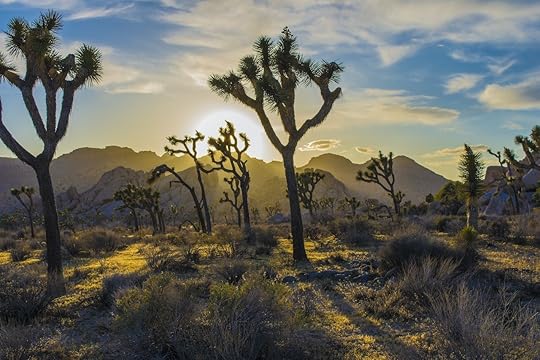
Photo: Heavy T Photography/Shutterstock
The American Southwest’s famous Joshua trees are not actually trees: They are agave, which are a type of succulents, i.e. a plant that’s able to retain water in its stems. Joshua trees have spines and produce white-green flowers at the tip of their branches in the spring. Joshua trees are found mostly in the Mojave Desert, especially in Joshua Tree National Park in California, and have become one of the region’s most defining features. According to the NPS, you may also find them “growing next to a saguaro cactus in the Sonoran Desert in western Arizona or mixed with pines in the San Bernardino Mountains.”
19. Spider trees, Pakistan
Photo: luciezr/Shutterstock
When wide-scale flooding hit Pakistan in 2010, spiders fleeing the rising waters took to the trees and cocooned them in spiderwebs. Despite their forlorn appearance, there is a silver lining. According to Wired in a 2011 piece, Britain’s department for international development found that areas where spiders overtook the trees have experienced fewer malaria-spreading mosquitoes.
20. Buttress roots
Photo: sittitap/Shutterstock
These roots, known as “buttress roots,” can be found on many different species of tree, although they are more commonly seen on trees in tropical rainforests. They are a form of widening and spreading of the trunk that act to help large, top-heavy trees stay upright.
21. Japanese maples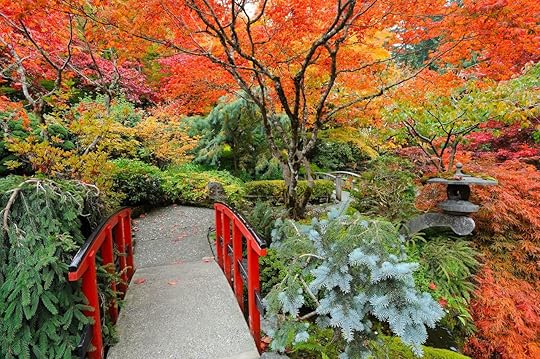
Photo: 2009fotofriends/Shutterstock
Japanese maples are native to Japan, Korea, China, Mongolia, and Russia, and have also been grown in temperate climates around the world since the 1800s. Unlike other plant species, the Japanese maple varies in leaf-form, color, and tree shape, making each one unique. There are more than 1,000 varieties of Japanese maple in the world today. 
A version of this article was previously published on September 10, 2014, and was updated on February 5, 2021, with more information.
More like thisParks + WildernessThe 7 most fascinating flowers around the world you need to see in personThe post 21 spectacular and unique trees and forests around the world appeared first on Matador Network.

Get paid to visit this California region’s wineries, breweries, and beaches
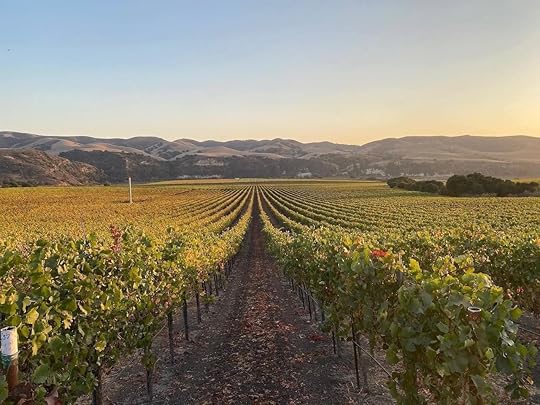
California is typically a desirable vacation destination that doesn’t need to grease palms to attract visitors. The pandemic, however, has devastated tourism economies around the United States, no matter how robust they usually are. That’s why Santa Maria Valley, located about 65 miles north of Santa Barbara, is launching a new program to attract tourists in an effort to help local businesses.
The “Visit Santa Maria Valley” program runs from February 4 to March 31, and will pay tourists $100 to travel there and stay a minimum of two nights at a local hotel. The payment is made in the form of a voucher, usable at any of the town’s restaurants, breweries, or wineries.
Jennifer Harrison, director of the Santa Maria Valley Visitors Bureau, told CNN, “Santa Maria Valley has so much to offer. We have beautiful beaches, hotels and wineries that are such a great option for budget-conscious travelers during a time of economic rebound.”
Harrison went on to note that since Santa Maria Valley is less crowded than other California destinations, it’s easier to enforce social distancing guidelines and keep tourists safe. “Our wine-tasting rooms, outdoor spaces, restaurants and hotels,” she said, “have worked together to evolve health and safety protocols so that visitors can experience the charm of the area.”
With 13 beaches, 34 tasting rooms, and an abundance of hiking, golfing, and birdwatching activities on hand, it’s pretty easy to safely explore the area and support local businesses — all while saving $100. 
The post Get paid to visit this California region’s wineries, breweries, and beaches appeared first on Matador Network.

Estonia and Georgia lift quarantine
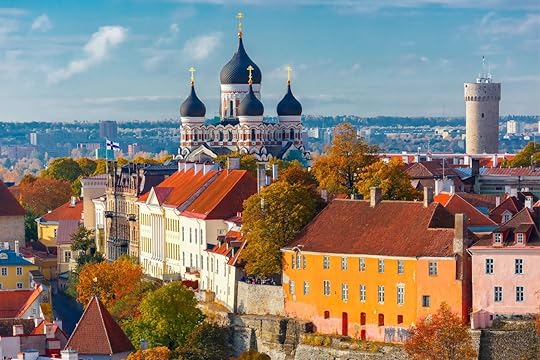
COVID-19 vaccines are becoming the new PCR tests as the global inoculation campaign ramps up (however slowly). The Seychelles, Romania, and Iceland have already lifted quarantine requirements for vaccinated travelers, and now Georgia and Estonia are joining the list. Both countries had previously mandated a quarantine for incoming international travelers, but now you’ll just have to show proof of receiving a second dose of any approved COVID-19 vaccine.
Georgia’s Ministry of Foreign Affairs announced that starting this month, “Citizens of all countries, travelling by air from any country may enter Georgia if they present the document confirming the full course (two doses) of any Covid-19 vaccination at the border checkpoints of Georgia.”
Unvaccinated visitors need to comply with different conditions according to their country of citizenship or residence. The rules for visiting Georgia as a non-vaccinated traveler are clearly detailed on the nation’s Ministry of Foreign Affairs’ website.
Similarly, Estonia is lifting its 10-day quarantine restriction for those who can prove vaccination, or prove they have recovered from COVID-19 in the past six months. The country will accept vaccinations from nine global suppliers, not only the three approved by the European Union. “This is to show mutual solidarity,” Hanna Sepp, head of the country’s COVID-19 efforts, told EER News. “If we take into account vaccines in use in other countries, we could hope that vaccines in use in our country will also be taken into account in other countries.” 
The post Estonia and Georgia are lifting quarantine restrictions for vaccinated travelers appeared first on Matador Network.

The most romantic hotels
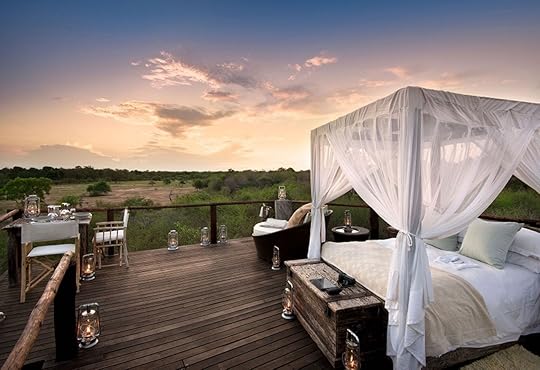
What travelers classify as a romantic vacation is as varied as love itself. Some may crave a five-star opulent service, while others might favor low-key privacy. But one thing is for sure, a trip away from the conveyor belt of day-to-day life with a loved one will shake up any relationship. Choosing the destination for a romantic vacation is not as vital as the experiences you make, but having a nice backdrop sure is an added bonus.
The hotels listed here are some of the most over the top accommodations in the world. These places are raved about because they offer the best of the best in terms of privacy, they are celebrated for their extravagant interiors, they offer top-notch couples activities and dining, and promise to tailor your experience into the most romantic stay you’ve ever fantasized about. From the floating Taj Lake Palace in Rajasthan, India, to the former villa of Elizabeth Taylor, here are some of the most dreamy hotels for the ultimate romantic vacation.
1. Il Borro — Tuscany, Italy
Photo: Il Borro/Facebook
Within a thousand-year-old village, Il Borro is about 37 miles from the beautiful cities of Florence and Siena, making it an ideal rural romantic escape. Encapsulated by tree-covered hillsides within a 750-hectare organic working estate, the resort looks like a scene from the ’80s movie A Room with a View, yet its Tuscan charms have not been compromised. Although you could easily get lost down the hamlet’s narrow cobbled streets and sprawling vineyards, the hotel has a great range of facilities such as its spa, cooking classes, truffle hunting trips, and horse-riding excursions.

Photo: Laura Reilly
The resort has two restaurants, Vincafè and Osteria del Borro, with the latter being the more refined option. The rooftop of Osteria del Borro is hopelessly romantic, offering views over the Tuscan landscape. Partner that with a glass or two of wine and produce from the local estate and you’ve got the recipe for an unforgettable experience.
2. Taj Lake Palace — Rajasthan, India
Photo: Taj Hotels
Floating in the middle of Lake Pichola in Udaipur, northern India, the Taj Lake Palace is one of the most romantic hotels in the world. Built in 1743 as a summer palace for Maharana Jagat Singh II from the royal dynasty of Mewar, the hotel was converted in the ’60s — but has lost none of its original features and opulent design aesthetic. Taj Lake Palace offers guests 360-degree views of the peaceful lake — a key filming location in the James Bond film Octopussy — and those lucky enough to stay here are treated like royalty.

Photo: Taj Hotels
Guests receive round the clock butler service, where they can ring for anything from a signature facial or traditional Indian foot massage to a platter of local fruits or a cooling mango lassi. Although this is not somewhere you would book on a whim, between the impeccable service and unique, beautiful location, it’s one for the bucket list.
3. Casa Kimberly — Puerto Vallarta, Mexico
Photo: Casa Kimberly/Facebook
Casa Kimberly sits on the Bay of Banderas, a horseshoe-shaped shoreline of pristine beaches and dramatic cliffs, looking out over the Pacific Ocean in Mexico. The grand colonial villa was originally home to Elizabeth Taylor in the ’60s and was developed in 2010 into a stunning nine-suite hotel. Rooms — all named after Taylor’s films — are huge and spread over two buildings that are attached by a replica of Venice’s Bridge of Sighs. Reviews rave about the sense of privacy the suites offer and the service mirrors this in its hands-off approach, allowing guests to feel comfortable and at home. That being said, Kimberly’s open-air rooftop restaurant and tequila bar are vibrant. With a menu of modern Mexican dishes, a backdrop of the ocean, and a Mariachi band playing in the evenings, this is arguably one of the most romantic places to stay on the coast.
4. Skybeds — Botswana, Africa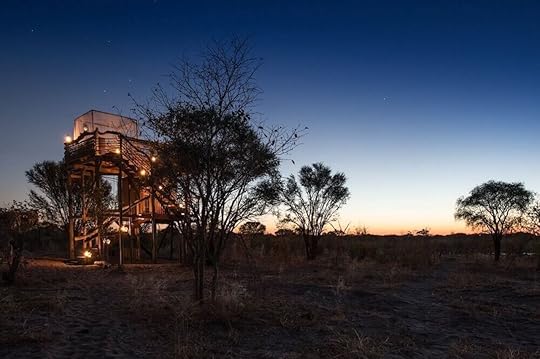
Photo: Skybeds
Skybeds offers guests the unique opportunity to sleep under a canopy of stars on the Khwai Private Reserve in Botswana. This is not high luxury but it is a one-of-a-kind experience that will not be forgotten. Open to guests staying at the sister safari camp properties of Sable Alley and Hyena Pan, the three wooden treehouses are simplistic in nature but have comfy beds with luxuriously thick duvets to combat the chilly African nights.

Photo: Skybeds
Although the structures are open to the elements, they are spacious and set apart, so couples have total privacy. A fourth wooden tower houses a rooftop bar which overlooks a watering hole where you can enjoy an evening drink and spot local wildlife such as elephants, giraffe, and antelope.
5. Nihi Sumba — Sumba Island, Indonesia
Photo: NIHI/Facebook
Sumba is a remote island sitting off the east coast of Indonesia and offers some of the best surf in the Indian Ocean. But regardless of whether surfing is your thing, the island’s countryside of limestone hills and savannas peppered with small villages is a haven in the Indonesian archipelago.
The hotel, Nihi Sumba, encapsulates the charm of this island. Nihi Sumba’s nine villas are connected by a series of white stone paths enclosed by banana and frangipani trees and all have a private infinity pool with views out over the ocean. The resort’s tagline reads, “This is not an escape from everyday life. It is the return to a life well lived.” And yes, you could happily live here. From sunset private yoga to horseback riding on the beach to its “spa safari,” there is a lot to do. That said if you would rather kick back and do very little, this is one of the more special places on the planet to do so.
6. Le Mas de la Rose — Orgon, France
Photo: Le Mas de la Rose/Facebook
The city of Orgon, in the Provence-Alpes-Côte d’Azur region of southern France, has undergone little modern development and has retained its rich historical heritage. Orgon’s ancient streets are adorned with quintessential Renaissance facades and the market town is one of the prettiest in this region of France.
Overlooking the city on the hillside, Le Mas de la Rose, a 17th-century cluster of restored farm buildings, attracts those who are looking for the simplistic luxury Provence is so well known for. The hotel is an ideal base for exploring the region and is set within rolling lawns dotted with olive trees and aromatic lavender. In the evening the gardens and poolside are romantically lit and the restaurant’s menu of organic produce grown on the property is in keeping with the hotel’s uncomplicated elegance.
7. The Caves Hotel and Spa — Negril Jamaica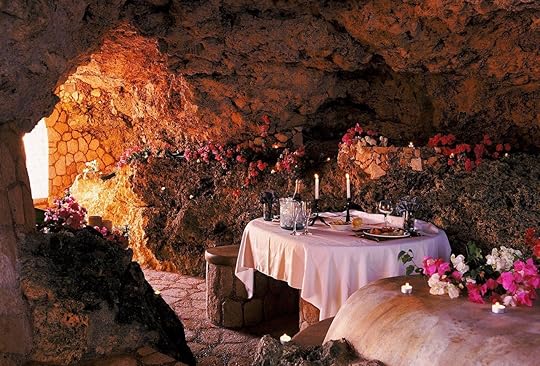
Photo: The Caves/Facebook
The Caves is about as exclusive and hidden away as you can get for a romantic getaway in Jamaica and what’s more, it’s adult only! The cliffside location is minutes away from Negril’s famous seven-mile beach and is an easy 80-minute transfer from the airport in Montego Bay.
The resort features twelve secluded cottages hidden in the property’s tropical gardens along the cliff edge. Brightly colored textiles, artwork, and stained glass accent the palm wood and straw of the cabins, and each have a queen-sized bed, a packed minibar with local treats, and an outdoor shower. For those looking to celebrate a special occasion, you can book a private candle-lit five-course diner in one of its caves or at a private spot along the cliff face. The saltwater pool and outdoor hot tub treat guests to views out over the ocean and although these are communal spaces, the indoor hot tub can be privately reserved between 5:30 PM and 9:30 PM.
8. Song Saa Private Island — Cambodia
Photo: Song Saa Private Island
Song Saa Private Island is — as its name suggests — a private island that sits on the Koh Rong archipelago off the coast of Sihanoukville in southern Cambodia. It has been heralded as one of the world’s best luxury eco-resorts. The two small islands are covered in rainforest and are surrounded by a 100-hectare marine reserve which Song Saa has worked to establish. With sustainability at the forefront of the creation of the resort, all villas were crafted using local materials and are adorned with southern Cambodian textiles and artwork.

Photo: Song Saa Private Island
Its Maldivian-style accommodation sits above the water and each has its own plunge pool with steps leading into the crystal clear ocean. Song Saa is also dotted with outdoor spas where treatments take place under a thatched canopy. In keeping with the owner’s commitment to local culture, spa therapies utilize native plants and Buddhist practices. This is another place you need to plan in advance to visit, but if you want a tailored romantic experience in one of the most private places in Asia, Song Saa delivers. 
The post The most unforgettable romantic hotels in the world appeared first on Matador Network.

Positive sustainability news

This is The Climate Win, the most positive sustainability news around the world every week.
US President Joe Biden’s rapid approach to addressing climate change appears to be spearheading a global reapproach to climate policy – and this is, in turn, infiltrating many aspects of the global economy. This includes travel, beginning with the future of ground transportation and continuing all the way up to 30,000 feet. Let’s dive in.
In his first two weeks in office, Biden signed multiple executive orders on climate, bringing the United States back into the Paris Agreement, halting new oil and gas leases on public land, and making environmental implications a factor in federal decision making, among other things. He also signed an order aiming to electrify the 645,000 vehicles in the federal vehicle fleet, which has drawn near-immediate follow-ups from major auto industry players that, in the long run, will impact travelers both in the US and across the world.
The New York Times reported on January 28 that General Motors will cease production of gas-powered vehicles by 2035. As one of the world’s largest automakers and one whose products span the entirety of the globe, the move is likely to spur similar statements from other major carmakers. Nissan quickly upped the ante, announcing last week that it would electrify its entire fleet by 2030, as reported by Yahoo! News.
The ripple effects of vehicle electrification will seep into other aspects of travel as well. For instance, all of those electric vehicles will need batteries, which will drive innovation and production of battery storage technology. This will make it easier for places like hotels and restaurants to power themselves with renewable energy as battery manufacturers produce more batteries for cars and beyond, and innovation allows those batteries to store more power.
The US hopes to install half a million new public chargers by 2030, the Times also reported. It’s estimated that the US will need 25 percent more power from the grid in order to charge all of those electric cars. Fortunately, solar power will be there to meet the need, which as of last year is officially the cheapest form of power to produce and distribute. Biden’s effort to double offshore wind power capacity by the same 2030 timeframe will only help the cause.
Now, let’s zoom out and look at what this rapid shift to a renewable-energy-powered transportation sector means for travelers. Market forces still largely drive global economics — i.e., what makes money, wins. Biden can sign executive orders every day for four years, but government regulation only goes so far in curbing the private sector, in which the vast majority of tourism dollars are spent, earned, and invested. But since Biden’s inauguration on January 20, global financial policy has already reacted with a heavy shift toward greener living. And this could really help to make your travels greener, even beyond common “green travel practices” like purchasing carbon offsets.
Michael Coren, a climate reporter with Quartz, reported last week that major investment banks and banking regulators in the US and Europe, including BlackRock and the European Central Bank, are beginning to outwardly consider the long-term climate impact of the companies and causes in which they invest. The Paris Agreement ensures these considerations will continue to scale in investment firms around the world as countries work to reduce and eliminate their carbon footprint, and put tougher emissions restrictions in place as a result. This pushes travel industry businesses to think green, as evidenced by United and each of the 13 airlines in the OneWorld partnership that have announced net-zero carbon emissions targets, and to pursue more eco-friendly biofuels made from things like food waste and sugarcane to power their flights. Look for their 2050 net-zero targets to be pushed forward in the coming years.
This all fits in nicely with another, oddly less-publicized announcement from Washington, DC, that came out last week. The executive order issued by Biden on January 27 to halt new oil and gas leases on federal land also contained a commitment to conserve 30 percent of US land and coastal seas by 2030 — in line with the 30 by 30 initiative championed by environmental groups and even many federal lawmakers. If this pans out, by the time we’re all heating our homes with renewable energy and flying on biofuel-powered planes, we’ll have a lot more protected outdoor recreation spaces to drive our electric cars to.
More climate winsElon Musk is investing in carbon capture technology. The serial entrepreneur committed $100 million as a “prize” to the best carbon capture technology, giving a very public boost from one of the world’s most renowned business leaders to an idea that many scientists say is a necessity if we hope to keep global warming to 1.5 degrees Celsius. Carbon capture technology pulls carbon from the atmosphere and stores it, often underground, preventing it from trapping heat.
Brazil, traditionally a country with a very meat-heavy diet, is seeing a rise in vegetarian and vegan dining options, Matador’s Noelle Salmi reported. According to the Brazilian Vegetarian Society, 14 percent of Brazilians now consider themselves vegetarian or vegan.
We close this week with a nod to two action sports companies who have for years put sustainability and adventure travel at the core of their business, and both of which happen to have new films out that highlight their connection to the environment. Burton’s OneWorld is available on Amazon Prime and on Burton. Arbor’s Crossing the Grain documentary streams on Arbor Collective. You can stream each one for free this week. 
The post Travel’s future looks green, as cars go electric and airlines seek biofuels appeared first on Matador Network.

February 4, 2021
Next gen hawkers to know
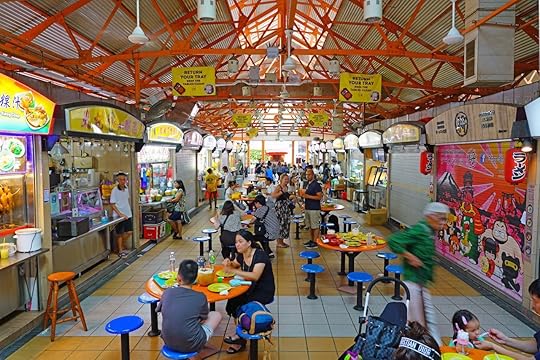
Solar powered “supertrees,” modern skyscrapers, and the Marina Bay Sands place Singapore’s skyline among the most modern and iconic in Asia. Still, for many, a relic of the city’s past defines a visit to this island nation of nearly six million: hawker food centers.
Singapore’s hawker food centers are collections of independently operated food stalls housed under one roof. Some centers are small, with only a dozen or so vendors, while others have more than 100. Each vendor serves their own recipes, and in any given center you’ll find cuisine from around the world. Singapore’s diverse population — majority Chinese, but also with large populations of people of Indian and Malaysian descent — is well-represented in the hawker centers.
Think of the last time you went to the food court at a large mall. Singapore’s hawker centers are kind of like that, except they’re generally open-air. Instead of choosing between Sbarro and Jamba Juice, you’re tempted by a local family serving banmian (a common Singaporean noodle dish) and the citrus-heavy aroma of Vietnamese pho that seeps over from the adjacent stall. Most centers have at least one purveyor of Indian food, though oftentimes there are multiple and each specializes in the regional food of the owner’s heritage. Street food in Singapore dates back to the 1800s when, under British colonialism, migrant families would prepare and sell family recipes on street corners to migrant workers craving both a taste of home and a quick, cheap meal. Not unlike the street food culture of other Asian metropolises, the practice took off as the city continued to grow in the early 1900s.
In 2020, Singapore’s hawker centers were placed on UNESCO’s Representative List of the Intangible Cultural Heritage of Humanity. As long-time hawkers age toward retirement, a new generation of owners is defining how they will be preserved.
The next generation of Singapore hawkers
Photo: AhBoon.Net/Shutterstock
After growing up in the tech-heavy culture of modern Singapore, many hawkers’ children opt to head abroad for university studies to pursue careers as bankers, lawyers, or other white-collar professions. The Singaporean government hopes to change this through a series of federal programs aimed at educating young generations on the ins and outs of the industry, as well as offering subsidies to start or continue a hawker business.
One person taking the government up on the offer is Claire Huang, a 33-year-old Singaporean who joined the fledgling movement of young hawkers and opened her own stall three years ago, Carrot Cubes, to sell Singaporean carrot cake and other traditional desserts inside the Cheng San Market.
“I would say it is not an easy trade for young aspiring hawker as it requires them to work long hours in a hot and cramped stall,” Huang says. “However, the Singapore government has sought, through traineeship programs and monetary subsidies, to lower the barriers of entry for young aspiring hawkers. I strongly believe that we will definitely find our ways to rejuvenate and sustain the hawker trade and safeguard our hawker culture and this is certainly a step in that direction.”

Photo: Deanna’s Kitchen/Shutterstock
UNESCO status has combined with the government programs to attract new players even without kitchen experience.
“I am certainly proud that Singapore has won the UNESCO recognition as Intangible Heritage Culture of Humanity,” Huang says. “It made me feel like we have won an Oscar! I would like to take this chance to thank all the hawkers, especially the first generation, as this recognition would not have come without their sweat, toil and dedication to their profession.”
Denise Chew, a former banker, opened Deanna’s Kitchen in the Jarong East Outlet with her husband in 2017. Chew offers halal takes on popular Asian dishes like Chinese prawn mee, which traditionally contains pork.
“[I] think it’s awesome that Singapore managed to get the [UNESCO] bid as hawker centers are an important and essential component of Singapore’s culture and diversity and have seen generations of hawkers doing their utmost to feed the nation,” she says.
Their gamble has paid off so far — the couple in 2019 opened their third location in Bedok North following the opening of their second in the Toa Payoh West Market and Food Center.
The future of hawker food culture in Singapore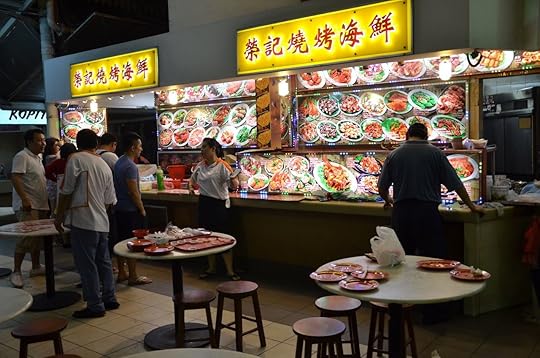
Photo: Tang Yan Song/Shutterstock
Part of the appeal for the younger generation is the ability to combine tradition with modernity. Huang, Chew, and other young operators in Singapore’s hawker centers are embracing modern ways of doing business, such as online ordering and delivery, and many have eschewed the traditional cash-only model in favor of accepting online payments and cards. This is quite a shift for what has historically been a bare-bones operation.
“The new generation of hawkerpreneurs will be able to come armed with business plans and the resources to expand their business overseas,” Huang says. “I strongly believe hawker food won’t disappear, but that the production and business models may change as now we are in a world of commercialization and automation, so some of the tradition techniques might be replaced by machinery.”
Some hawker centers have already enjoyed recent fame as individual chefs gain worldwide-renown. The Maxwell Food Center and its most popular stall, Tian Tian Hainanese Chicken Rice, often has a line of tourists waiting to place an order. For some, Michelin stars have followed the increasing success. Chan Hon Meng, better known as Hawker Chan, became the first hawker to earn the coveted Michelin star at Hong Kong Soya Sauce Chicken Rice and Noodle in 2016.
In terms of the future of the hawker culture, Chew says, “I hope that this culture will persist even in future generations. It is not an easy job to be hawkers, but it is certainly rewarding when you see people enjoying your food. If I can, I would want to pass my hawker business to my son to continue the business and I hope more young people will take up the challenge.”
The country’s young hawkers have big shoes to fill — and are eager to fill them. 
The post Meet the next generation of Singapore’s UNESCO-protected hawker culture appeared first on Matador Network.

Matador Network's Blog
- Matador Network's profile
- 6 followers



